|
 |

The European Theatre of Operations – September 1944:
By September 1944, the German military high-command
was faced with the harsh reality of fighting a two-front war in Europe.
The Western Allies were advancing quickly from their beachhead at
Normandy
and were closing in on the
Rhine River
from the west. On the Eastern Front,
the Soviets were firmly entrenched in
Poland
and were consolidating their gains for a crossing of the Oder River.
The end was growing near for Adolf Hitler’s 1,000 year
Reich.
Realizing that the
Germany Army could not win a two-front war, Hitler believed
that he could effectively utilize his mobile reserves for
one last major offensive.
He envisioned a heroic, last-ditch effort against the
Western Allies which could achieve a military stalemate and
a possible negotiated settlement.
Hitler’s thoughts of any possible total victory in
the war had ended with the defeat of German Forces at
Stalingrad
in February 1943.
The Soviet Army gained needed momentum after the
victory and had pushed the German Army westward toward
Berlin.
Hitler and his military advisors believed they could attack
the Allied front lines through the Ardennes Forrest in an attempt to drive them
back to the port
of Antwerp,
Netherlands.
He thought a successful attack through the Ardennes might force the
Allies to negotiate a separate peace with
Germany.
Hitler correctly realized that the alliance of Frank D. Roosevelt,
Winston Churchill and Joseph Stalin was tenuous at best.
If a settlement with the Western Allies could be achieved,
Germany
could then consolidate its forces against the Soviets on the Eastern Front.
The Germans had committed untold atrocities during their occupation of
the Soviet Union and realized that it would be in their best interest to keep
the Red Army from entering
Germany.
Germany
was also in the process of rapidly developing a series of advanced weaponry,
including jet fighters (Me-262) and ballistic missiles (V-2).
Hitler also believed that prolonging the war would allow German factories
adequate time to bring these new weapons into mass-production.
Also on the drawing board was an intercontinental ballistic missile that
would posses the range needed to strike
New York City.
His rocket engineers, along with captured V-2 missiles, would be brought
to the
United States
after the war and become the basis for the NASA Apollo Moon program.
The advance from Normandy
had proceeded quicker than anticipated, causing the Western
forces to dangerously stretch their supply lines. The front
line troops had also grown complacent as they had racked-up
a string of rapid victories over the German Army.
Allied dominance over the skies of
Western Europe
had also played a pivotal role in allowing the advance on
the ground to proceed quickly.
The American forces
had established ground to air communications and were able
to call in bomb-laden Republic P-47 Thunderbolts when
needed. Hitler
believed that the winter cloud cover over
Central Europe would eliminate the American air
threat and help even the odds of his
Ardennes offensive.
|
|
The United States Army 11th
Armored Division:
 The
11th Armored Division, nicknamed “The Thunderbolt
Division,” was activated at Camp Polk, Louisiana on August
13, 1942. Armored division's were designated by the United
States Army to provide high mobility, protected firepower
and shock potential enhanced by an independent ability to
conduct sustained operations. Each of the Army’s 16 armored
division’s had an authorized personnel assignment of
approximately 14,000 officers and enlisted men, 390 tanks
and 450 Half-Tracks. The
11th Armored Division, nicknamed “The Thunderbolt
Division,” was activated at Camp Polk, Louisiana on August
13, 1942. Armored division's were designated by the United
States Army to provide high mobility, protected firepower
and shock potential enhanced by an independent ability to
conduct sustained operations. Each of the Army’s 16 armored
division’s had an authorized personnel assignment of
approximately 14,000 officers and enlisted men, 390 tanks
and 450 Half-Tracks.
In October 1942, twenty year-old Albert
Woodruff left his rural Hickman, Kentucky home to join the
United States Army. Corporal Woodruff was assigned to the
11th Armored Division’s 42nd Tank
Battalion (Company B) as an M-3 Half-Track driver and .50
caliber machine gun operator. The M-3 Half-Track was a
nine-ton monster developed by Cleveland’s White Motor
Company that was designed to carry ten fully-armed troops
into battle. Its main armament was a Browning M-2 .50
caliber machine gun, a weapon still currently in
production. The World War Two-era M-2 could fire
approximately 600 rounds per minute at an effective range of
2,000 yards.
The combat-ready 11th Armored
Division landed at Normandy, France on December 17, 1944.
The division was under the command of Brigadier General
Charles S. Kilburn.
 |
|
 |
|
Corporal Albert F. Woodruff |
|
Brigadier General Charles S. Kilburn. |
|
|
The Battle of the Bulge and the
Siege of Bastogne:
On the morning of December 16, 1944,
German artillery fired a furious 90 minute-long barrage at
American troops in Eastern Belgium as the Sixth Panzer Army,
under SS General Sepp Dietrich, began an armored thrust
toward the port of Antwerp. The Nazi hierarchy correctly
believed that the capture of the important sea port at
Antwerp would materially reduce the flow of supplies to the
Allied forces. Further south, elements of the German Armed
Forces under General Hasso von Manteuffel advanced towards
Bastogne and St. Vith, both Belgian road junctions of great
strategic importance. The unexpected thrust by Manteuffel’s
Fifth Panzer Army shattered the American 28th and
106th Infantry Divisions and by December 21st,
they had surrounded the 101st Airborne (along
with elements of the 9th and 10th
Armored Divisions) at Bastogne, Belgium. The low cloud
ceiling denied the American’s critical usage of P-47
fighter/bombers needed for aerial assistance to break the
siege.
|
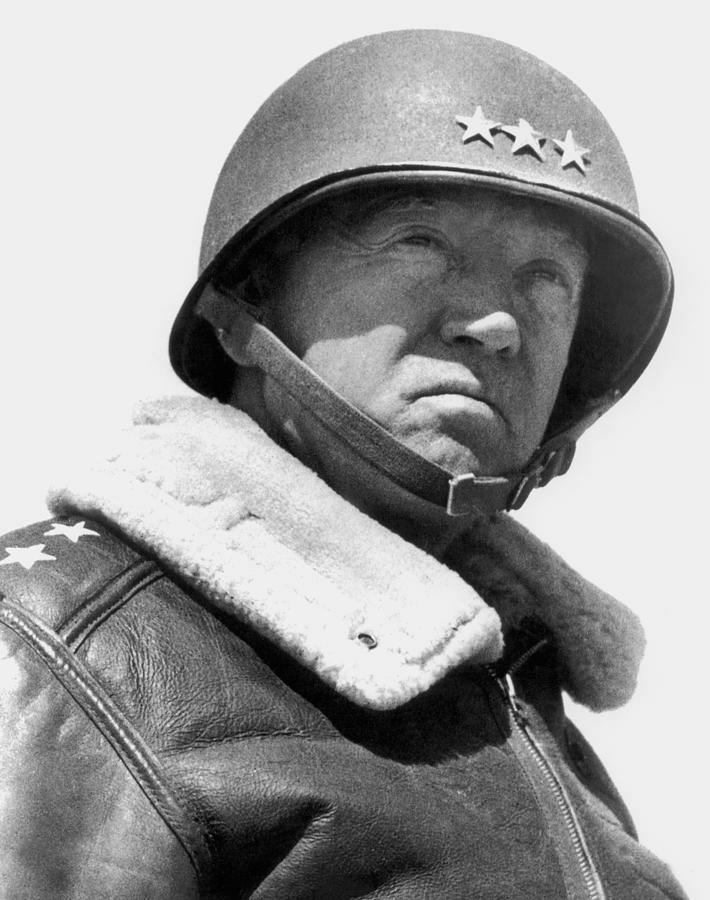 |
On December 19th, the
11th Armored Division was ordered to
begin a four-day, 350 mile long trek toward Bastogne
as part of General George S. Patton’s Third Army’s
relief effort. Upon completion of their almost
impossible
journey through bitter cold, rain and snow, the
11th Armored Division deployed
defensively along a 30 mile section of the Meuse
River, extending from Sedan to Givet in eastern
France. To the east, the eight-day siege at
Bastogne was broken on December 27th, as
the Fourth Armored Division broke through to the
surrounded city. The
relief of Bastogne is viewed by most historians as the critical turning point of
the Battle of the Bulge. It marked the beginning of
the German Army's long retreat back to the fatherland and
the subsequent collapse of the war’s western front.
|
|
General George
S. Patton |
Woodruff was in the 42nd
Battalion’s B Company, which consisted of a collection of
M-4 Sherman tanks and M-3 Half-Tracks. He was both the
commander and gunner of an olive drab colored M-3 named
“White Jug”. On December 29th, orders came for the 11th
Armored Division to advance another 85 miles over
snow-covered roads northeasterly into Belgium and assume
attack formations in the vicinity of the historic city of
Neufchâteau. The division was tasked with keeping the
important Bastogne-Neufchâteau highway open for Army supply
convoys. At this point in time, the highway represented
the only line of communication for the garrison at
Bastogne.
 |
| An 11th
Armored Division M-3 Half-Track passes a burned out
German Panzer IV in Foy, Belgium in early January
1945 |
|
|
For two weeks, Woodruff’s unit was in
constant contact with the enemy as they gallantly battled
through the snow-covered Belgian terrain. “We lost a
whole lot of
good people during that march” recalled Woodruff. It wasn’t just the fighting that
left an impression on the young Kentucky native; the
aftermath of battle was at times just as horrifying.
Woodruff and his men were often assigned the task of
searching the dead Germans bodies for any possible relevant
battlefield information. He states “we hooked a chain around
their feet and pulled them along to make sure that they
weren’t booby-trapped and didn’t blow us up.” While looking
for information he remembers opening up one of the dead
German’s billfold and immediately seeing a photo of the
soldier’s young child. “I remember one time watching one of
the guys in my unit trying to get the wedding ring off the
finger of a dead German soldier,” recalls a still disgusted
Woodruff, “he pulled out a knife and started cutting off the
soldier’s finger to get the ring, I just looked at him and
said I quit.”
|
 |
|
11th Armored
Division's march from Neufchâteau to Longchamps |
Woodruff reminisces about his accommodations in
the Belgian countryside, “It was bitter cold but we were
lucky. We got to sleep in a stable.” The division
encountered stiff resistance from the
5th and 15th Panzer Grenadier
Divisions while holding the vital Neufchâteau-Bastogne
highway but managed to emerge victorious and allow the road
to remain open. By January 1st, 1945, the 11th
Division had managed to liberate the Belgian town of
Chenogne from its German occupiers. “The snow was so deep
that we had to attach chains (termed track extensions by the
Army) to the treads of our tracks. I’m not sure how good
the chains were because they came off as soon as we put them
on. It was tough going out there fighting both the Germans
and the snow. The Good Lord was defently with me.” The
Thunderbolt’s continued to fight across Belgium for two
weeks until receiving orders on January 12th, to
advance to the city of Longchamps.
|
 |
|
An M-4 Sherman
tank on the road to Longchamps, Belgium on January
13, 1945 |
|
|
On the morning of January 14, Woodruff’s
unit has just reached the crest of a hill near Longchamps when they came
under attack by high explosive rounds fired by German
artillery positioned in the adjacent forrest. They
immediately started taking heavy losses from mortar and
artillery fire. Woodruff quickly manned his .50 caliber
machine gun and started providing cover fire to his
advancing fellow soldiers. The Sherman tank to the left of
Woodruff’s halftrack was hit by a .88 mm round which killed
the entire crew. “I remember watching the shell hit the
tank,” sadly reminisced Woodruff some 70 years later, “the
tank commander was able to get out of the burning tank but
he was on fire and fell dead into the snow. Those were all my
buddies. I can still recall the horrible smell of them
burning up in that tank.”
Woodruff continued to pour deadly .50
caliber machine gun fire at the German forces, even as
bullets from German machine guns impacted his
Half-Track. Woodruff was driven by the call of duty and
loyalty to support his fellow soldiers as they advanced, “I
don’t know how many men I killed that day. In fact, I don’t
want to ever know.” Under cover of artillery fire, German
infantry units closed within rifle range of the American
armor. “I could hear rifle shells hitting the armor of the
Half-Track but I kept steadily firing away with my .50
caliber Browning.” Unfortunately, an artillery shell soon
grazed Woodruff’s halftrack, which produced an enormous
amount of shrapnel which knocked the young Kentucky native
unconscious. He recalled “I remember watching a 5 gallon gas
can that was attached to the left front fly into the air
when the shell impacted.” Woodruff was evacuated to a mobile
field hospital and was paralyzed in both his left arm and
leg. By the end of the battle, German artillery and mortar
fire killed three enlisted men and one officer while
wounding eight other enlisted men. The single tank was knocked out
of action due to a direct hit in the turret.
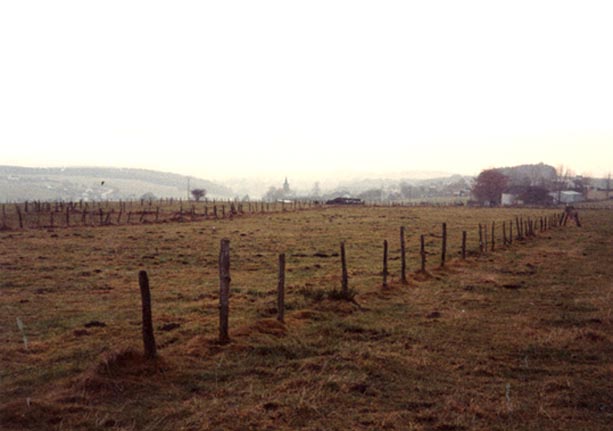 |
| The
battlefield at Longchamps, Belgium |
|
|
Aftermath:
The Battle of the Bulge was the last
major offensive conducted by the German Armed forces during
World War II. While the
race across the Rhine would not be an easy task, it would be a lot
less arduous due to the disastrous losses suffered by the
Germans during the Battle of the Bulge. According to the U.S. Department of Defense,
American forces suffered 89,500 casualties including 19,000
killed, 47,500 wounded and 23,000 missing making The Battle
of the Bulge the bloodiest battle for U.S. forces in World
War II. The German High Command's official figure for the
campaign was 84,834 German casualties, and other estimates
range between 60,000 and 100,000. The German losses in the
battle were critical in several respects: the last of the
German reserves were now gone, the Luftwaffe had been
shattered, and the remaining German forces in the West were
being pushed back to the defenses of the Siegfried Line.
The 11th Armored Division
would continue fighting across the heart of Germany. On May
5th, a cavalry patrol unexpectedly encountered German forces
guarding the concentration camp complexes of Gusen and
Mauthausen. The patrol returned with over 1,800 prisoners
that were liberated from these camps. Humanitarian actions
were taken to restore and maintain order in the camps, to
provide medical assistance to the starving inmates, and to
bury the thousands of victims of Nazi
brutality. Units of the 11th Division would
link-up with Soviet Forces at Amstetten, Germany on May 8,
1945, thus ending the combat exploits of the Thunderbolt
division.
In five months of combat, the 11th Division would
suffer 432 killed in action and 2,394 wounded in action.
They took a total of 76,229 prisoners, not including 10,000
who were turned over to supporting infantry units, and
34,125 who were returned to Soviet jurisdiction under the
terms of surrender. Following termination of hostilities,
the division engaged in occupation duties in the Munich
vicinity until the division was disbanded in September 1945.
Corporal Albert Woodruff would be taken to a United
States Army Field Hospital in France, where he would spend
three months as a patient. He eventually rejoined his unit
and spent the post-war period in the Munich area. Woodruff
would arrive back in the states and take a job at the United
States Defense Depot in Memphis, the city where he resides today. He
is active in his church and enjoys spending time with his
family and friends.
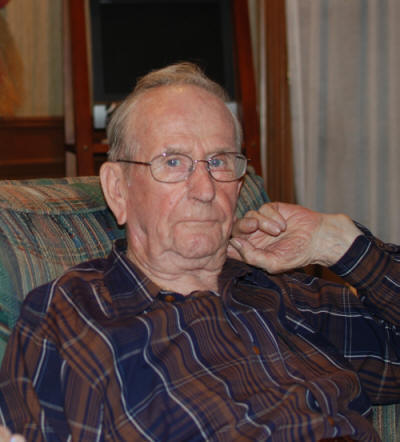 |
| Corporal
Albert F. Woodruff |
|
|
11th Armored Division - 42nd
Tank Battalion - Company B
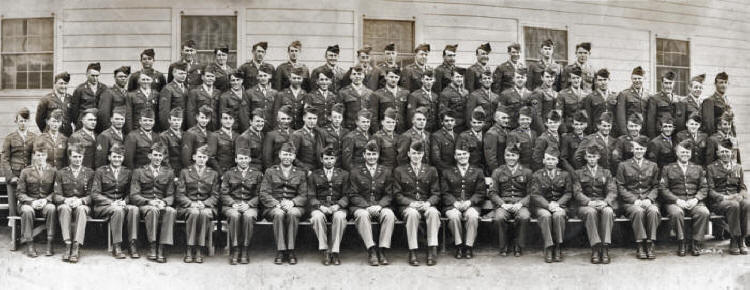 |
| Fort Polk,
Louisiana 1942 |
| |
The following
members of the 11th Armored Division - 42nd Tank Battalion -
Company B lost their lives in the service of their country
during the Second World War:
Vance Byler
John
Coyne
Arden Evans
Alfred Fermanian
Vincent Gorman
Alexander Horowitz
Alfred Jiricek
Homer Koenegstein
Lee
Leonard
Cecil Lindsey
Kenneth
McWilliams
Harold Oliver
Albert
Sanderson
Joseph Sardeson
Virgil Shaw
Joseph Shull
Walter Weymer
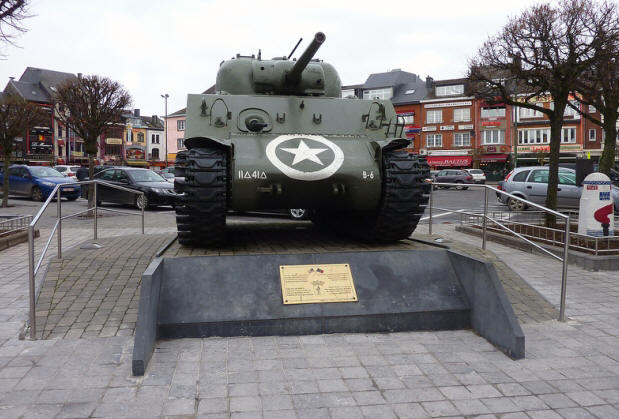
The
11th Division Memorial at Bastogne, Belgium |
|
|
|
|